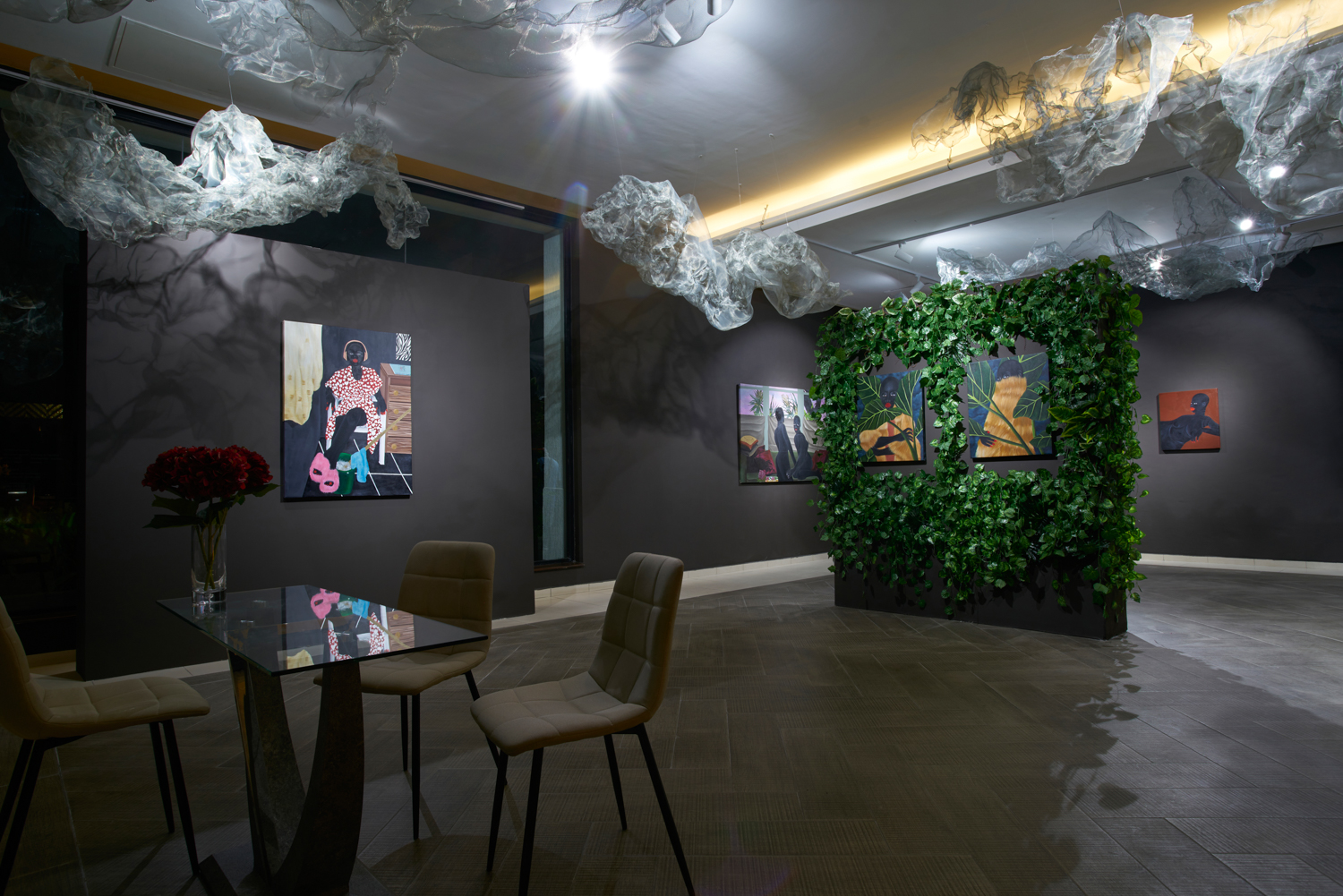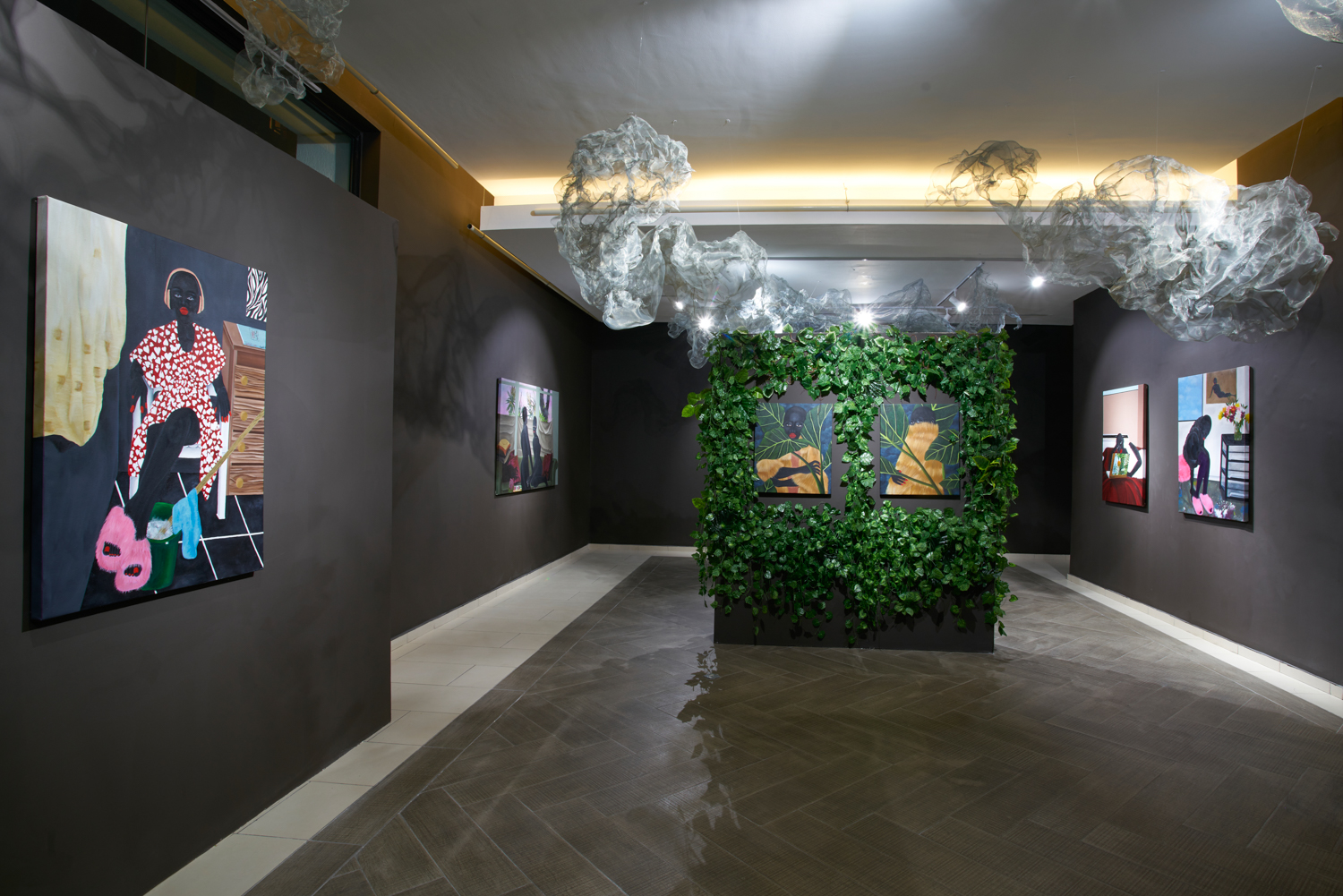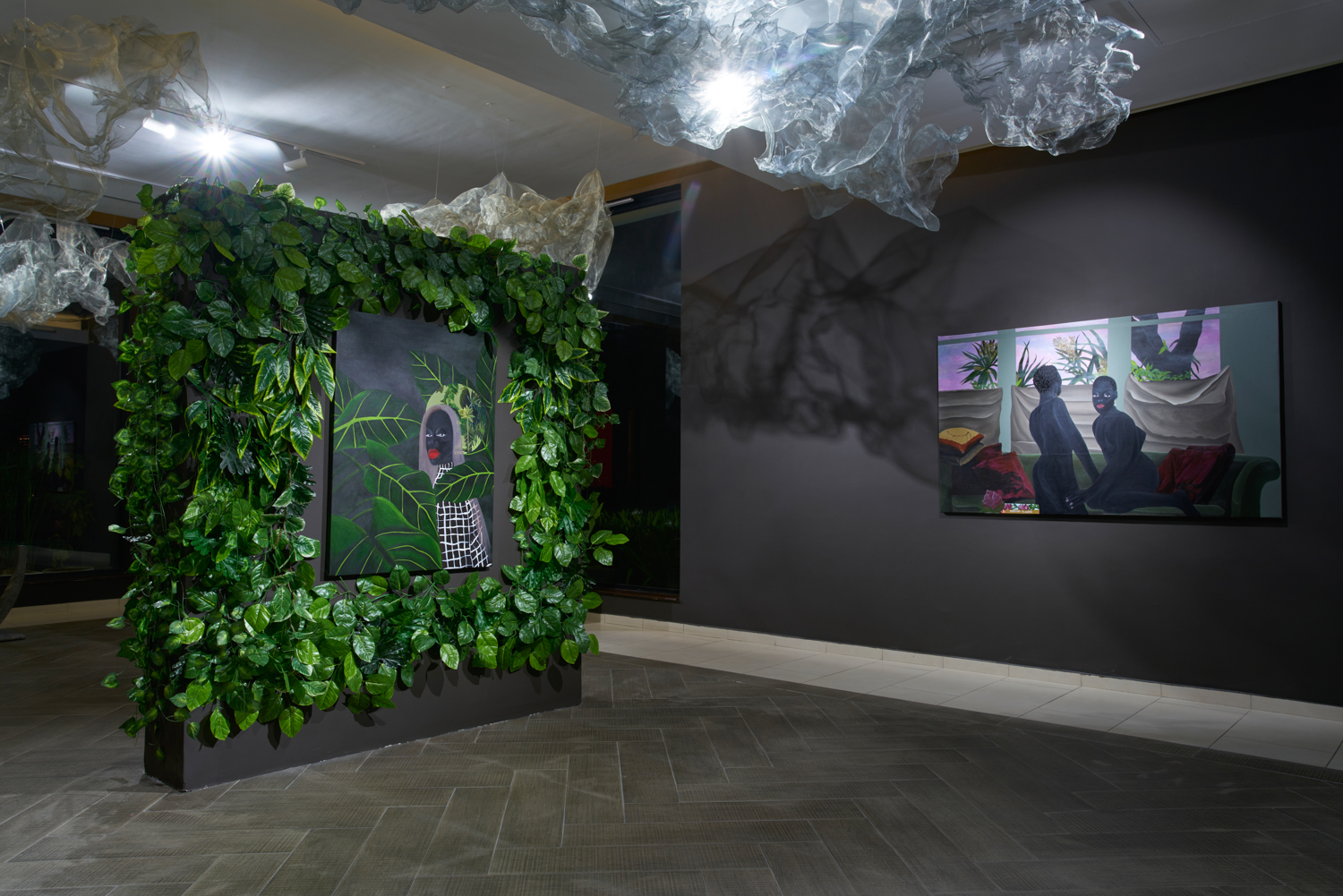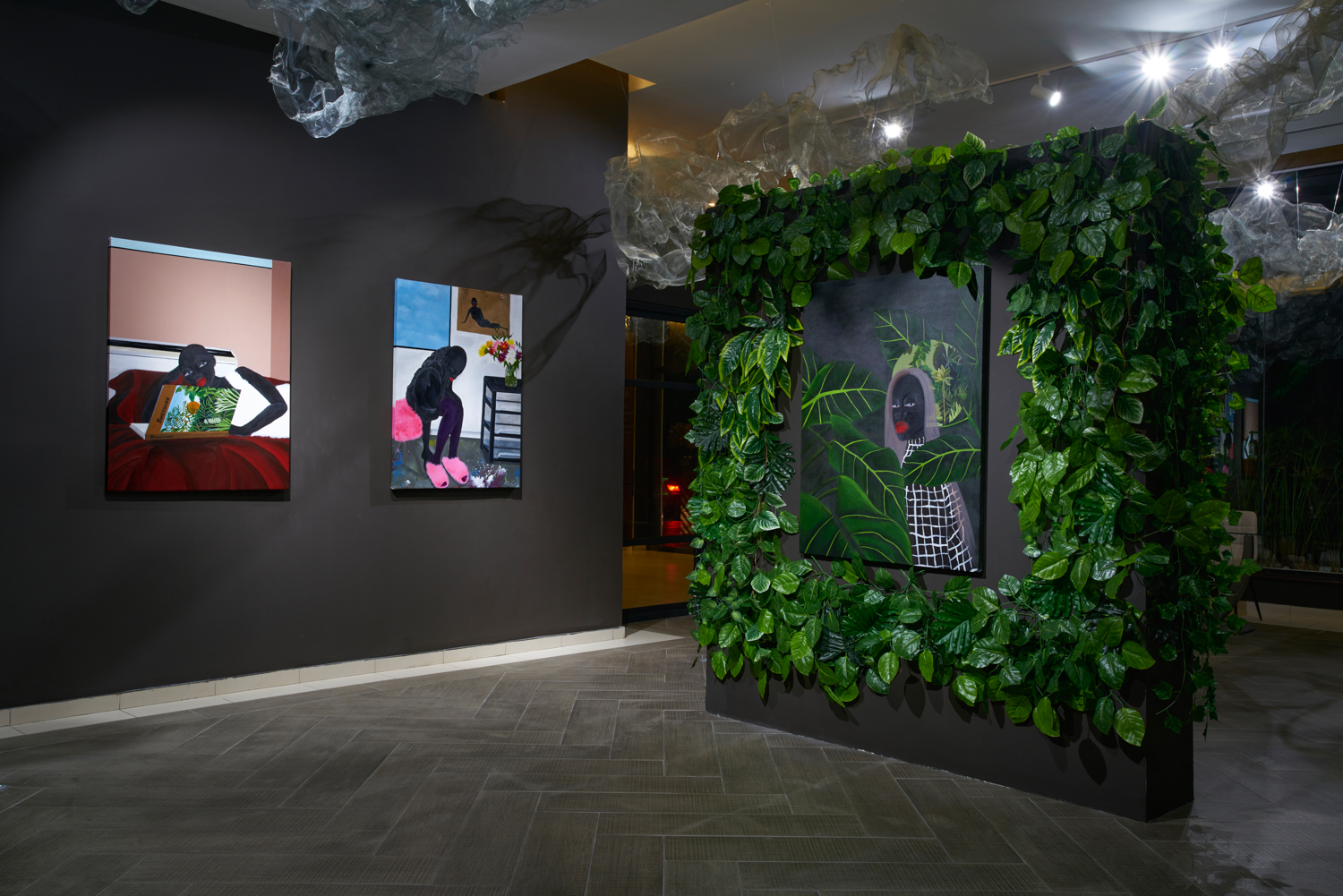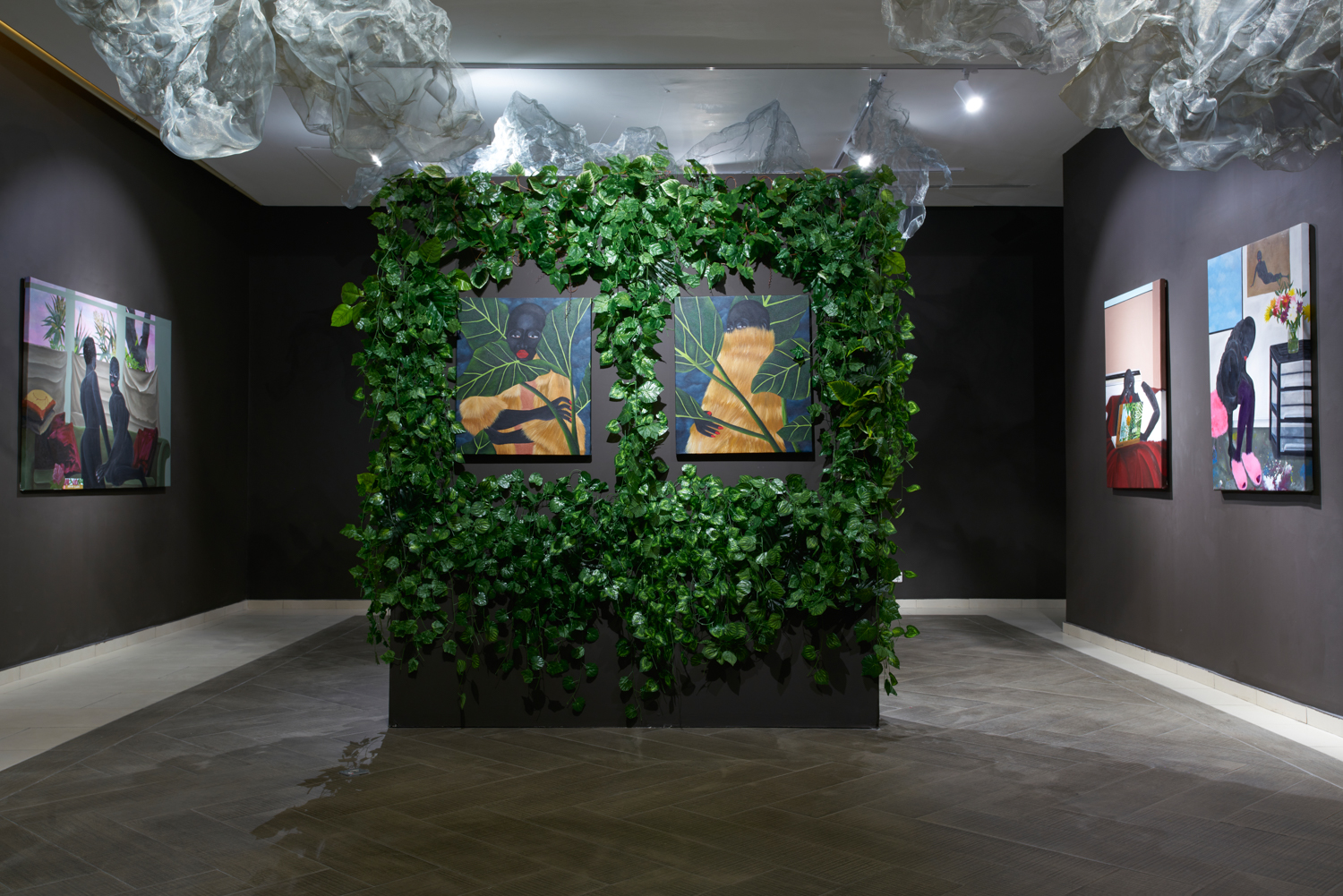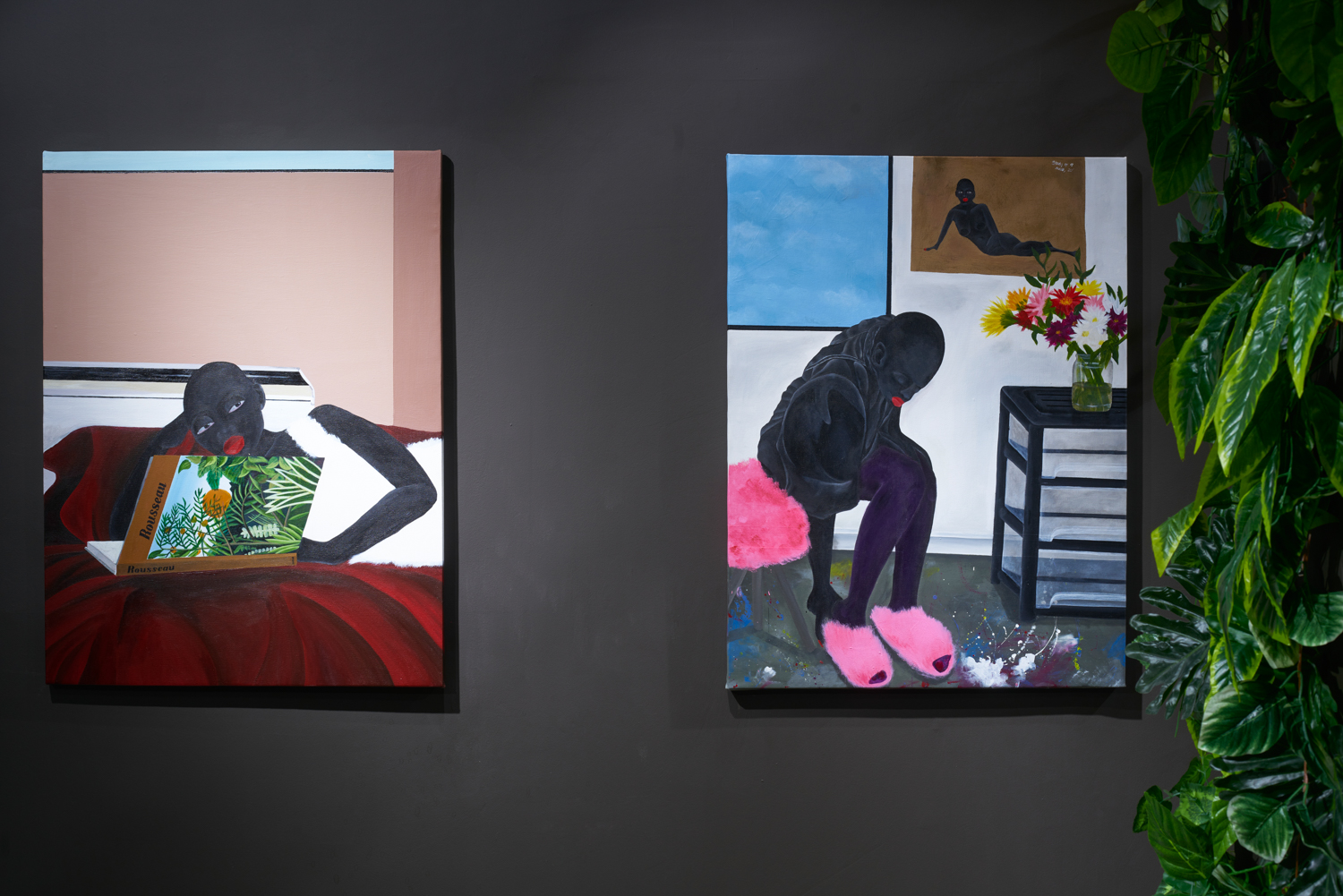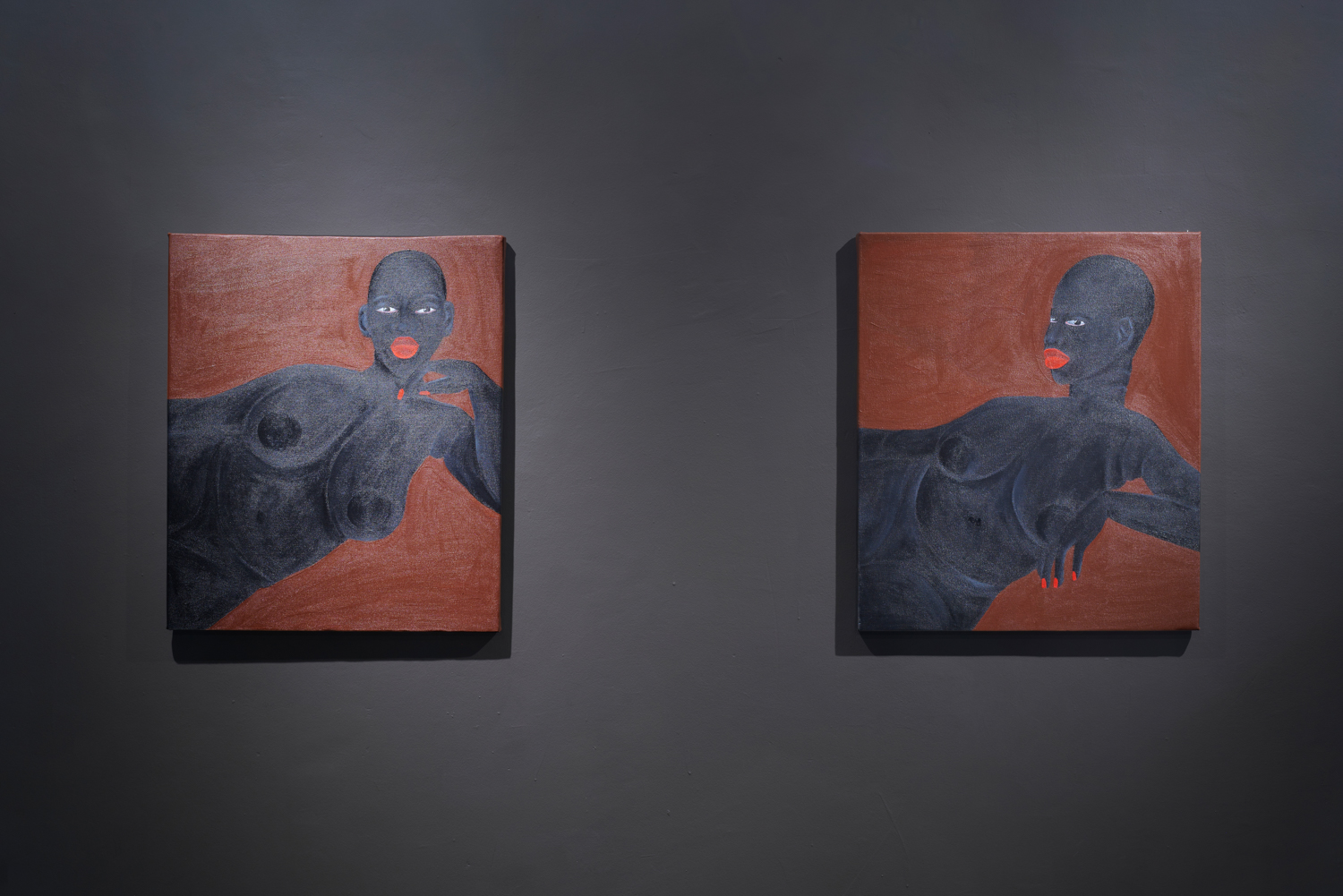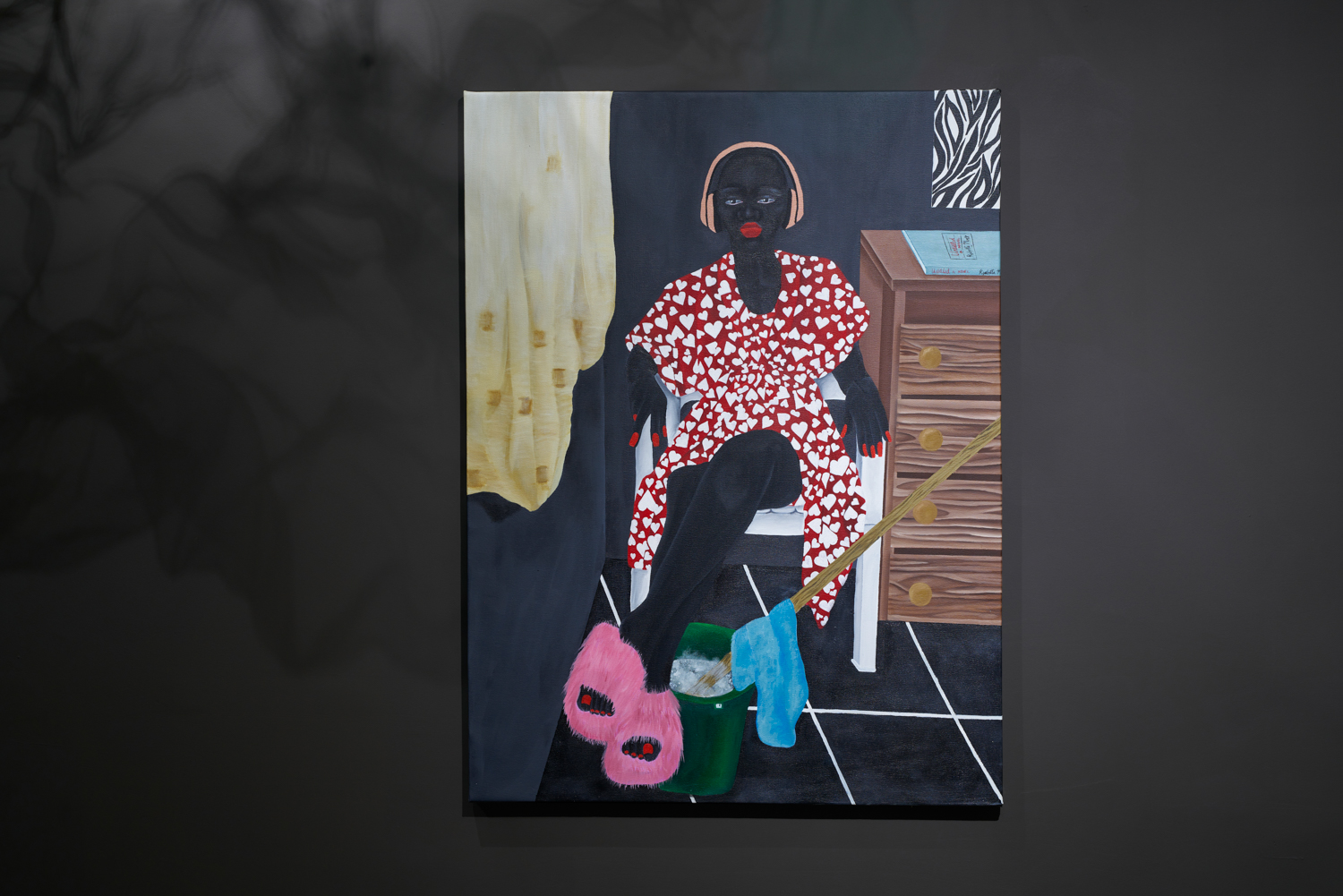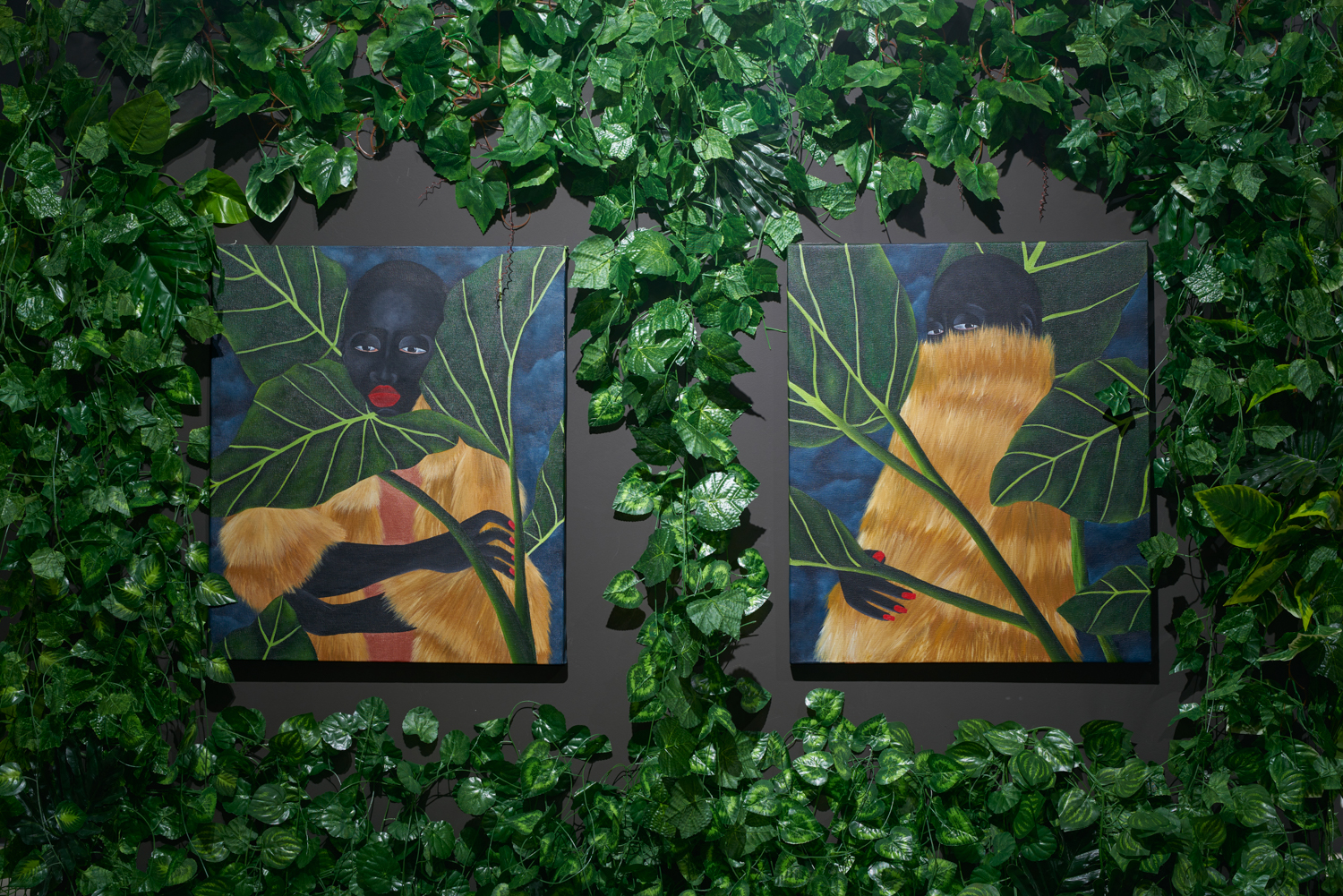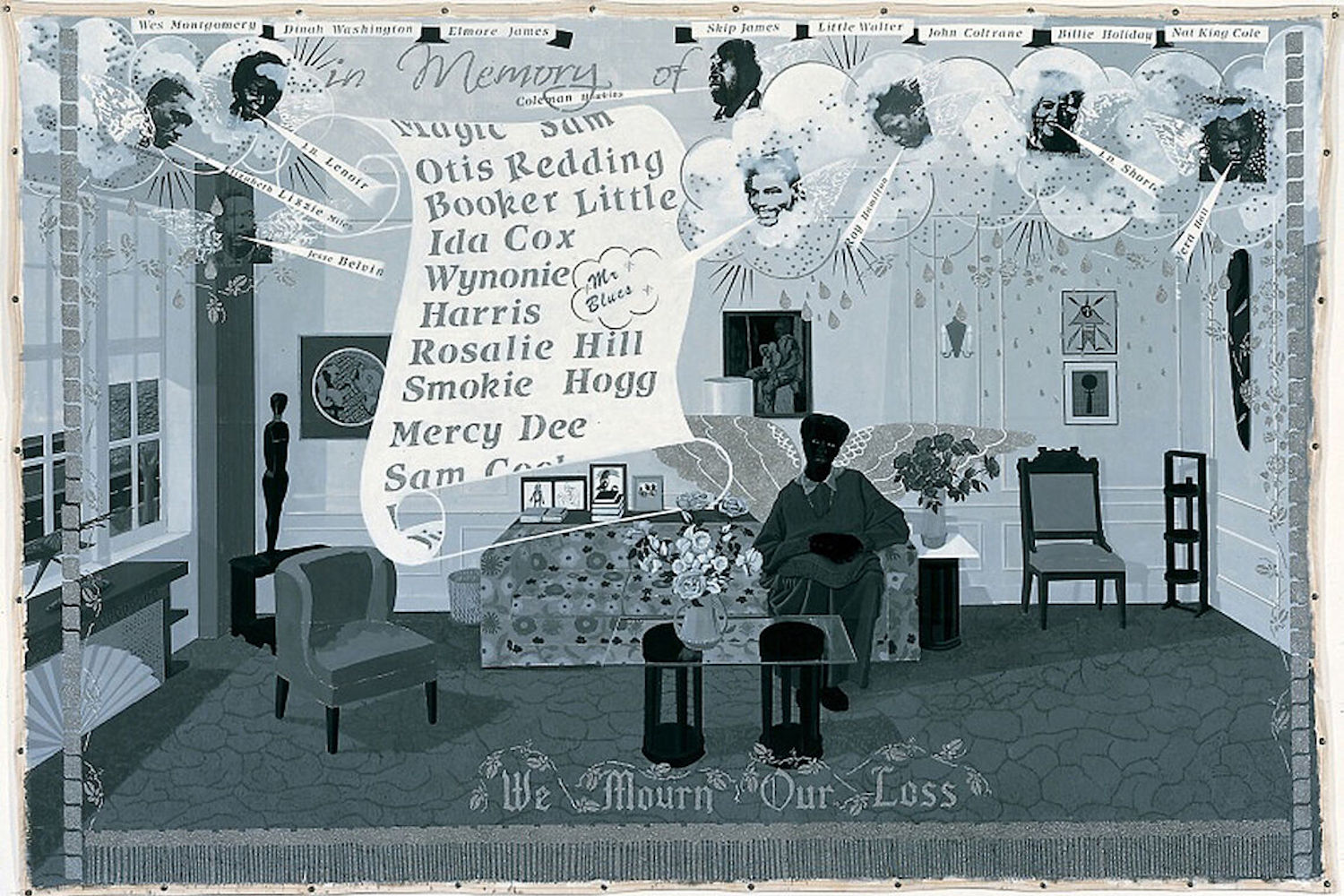Enter Paradise features an ensemble of ten portrait paintings, unveiling black females as central figures, in a state of rest, immersed by dreamscapes. An inaugural solo exhibition by Zandile Tshabalala (b. 1999, Soweto, SÁ), who is currently completing her (BA) FINA from the university of Witwatersrand, SA. In her self-portraits, Tshabalala seeks to challenge and deconstruct art historical canons of representation which often marginalize and obliterate black female figures. Tshabalala’s paintings, diverge from perceiving black women as inferior symbols, to depicting confident women who are beautiful, powerful, intelligent and take ownership of their own bodies.
On entering the exhibition, the viewer is instantly immersed into an embodied experience build around the theme paradise. The ceiling of the 850-square-meter space is covered with suspended mesh sculptures, symbolizing a souffle of clouds. At the centre, is a double-sided panel, engulfed by green foliage with two paintings titled, Enter paradise I & II, and one painting titled Ode to Rousseau II. The installation design and dark walls depict a scope of exhibition display which include, spatial arrangement, visual and contextual aspects, a physical and interpretative environment, through which Tshabalala’s paintings are presented. The artist’s series approaches the idea of relaxation from various angles- perusal, sexual, emotional, physical and cogitative. Between domestic scenes and tropical treescapes, her autobiographical dark-skinned figures with bold red lips are seen taking up differing roles. In her quest to reclaim the black body, the artist herself contemplates the concept of paradise, as being closely related to the state of rest and the dreamscapes she often revisits in her work. She articulates this by posing her highly pigmented skin toned figures in relaxed, everyday activities. In Ode to Rousseau I, Tshabalala’s figure is seen reclining in a bed holding one of her muse’s books (french post-impressionist painter Henri Rousseau), whiles staring intensely at the viewer.
Tshabalala’s paintings are flat and smooth yet do not lack curvature and surface details. The tones within the paintings vary from warm to cold, bright to dull, light to dark and thus render a striking color scheme.
Upon closer inspection, it seems the artist experiments with color by mixing together various pigments to create new kinds of vibrancy and thicknesses.
Even though Her paintings evoke equanimity, the provocative political undertones cannot be overlooked. In her painting titled February Flowers, Tshabalala portrays two seemingly androgynous male subject, nude and relaxed in powerful confrontational stands; framing her own dialogue in solidarity for the black queer community. The paintings, Proud Nude I and II, show a voluptuous feminine figure, regal yet calm and tranquil, staring unapologetically at the viewer. An assertion that all black women regardless their size deserve to have a body positive image.
Even though Tshabalala’s self-portraits are currently the focal point within her practice and visual imagery, the artist is not ignorant about the struggles of minorities. Through self-reflective and critical exploration, she does not hesitate to reveal her position continuously within her practice.

